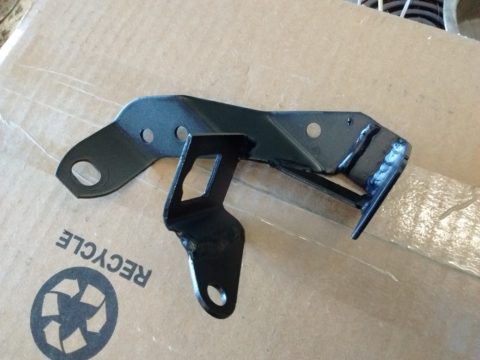While I like to think I am very good at tuning a carburetor, and spent quite a bit of time fine-tuning the Rochester in the Crusty Chevy, and while it ~did~ run quite well, the 1970's are over.
My greatest irritant was keeping a screwdriver in the truck so I could tweak the mixtures the teeniest bit every season. Just a little richer, just a little leaner. And every spring, when we were still burning the winter fuel but it was warm enough to vapour-lock, and even with the headers: <i>while driving</i>..... Good times.
So, since I had already collected all the parts I needed, I decided to finally do it. TBI first.
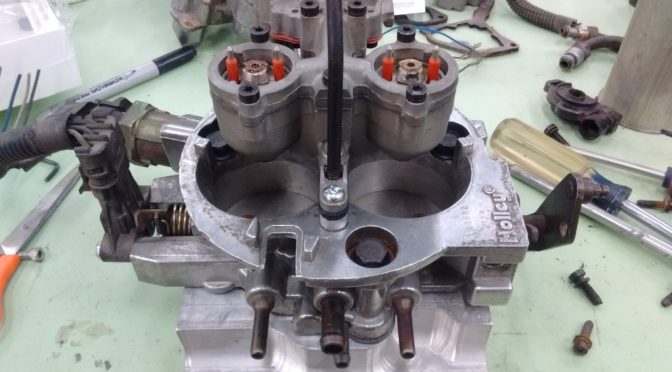
Background on the engine:
10.9:1 compression, fairly lumpy cam with tight lobe centers, loose converter, gears.
Heavily doctored Q-jet, stock HEI.
Day 1
I spend most of Day 1 changing the fuel lines and fuel pumps. The smart way to go about this, is to get 1987 fuel tanks, pickups, and pumps. When I built this truck, I (not thinking all the way through) had bought NOT 1987 tanks (no baffle) to the tune of $100 each when I shortened the truck. This would mean buying two new tanks again ($200) and two EFI fuel pumps ($300).
Instead, I used a low pressure pump I kept for insurance in the boot of
The Lethal Locost when the cheap Facet pumps kept failing on me.
The tanks run to the switching valve, the switching valve goes to an AC Delco EP12S mounted at the lowest spot of the frame, which feeds a surge tank I fabricated out of aluminum. The surge tank stores fuel for a late 80's Ford F-150 external pump, which in turn feeds the injectors. The injectors return to the surge tank, and the surge tank returns back to the switching valve and the appropriate tank. The purpose is so you never run the EFI pump dry. Makes perfect sense if you think about it.
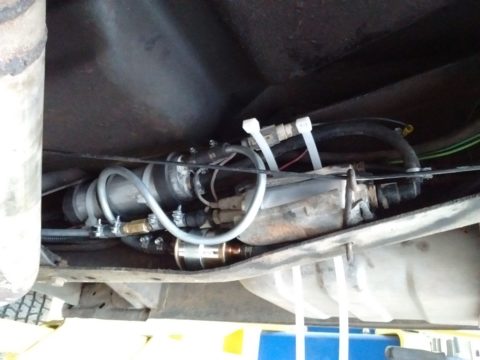
Reckneck hackery, no?
I had originally intended to use the factory mechanical pump to feed the surge tank, but the plumbing to make that work seemed a lot more complex.
I picked up a fuel pressure regulator out of China, because it came complete with a gauge for $9, and I just needed the gauge. I will use the regulator on a later incarnation; the TBI unit has its own regulator built in.
I waste-cast an adapter base to fit the Q-jet intake at the foundry at school (I teach highschool metalwork, mechanics and drafting).
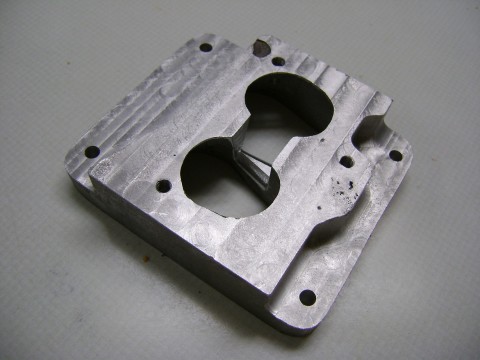
I picked up a Holley big bore TBI unit on Ebay, but discovered once I got it that it had 4.3L V6 injectors. I modified a GM injector pod to fit the Holley base (since they aren't really interchangeable), using a 1/4" aluminum spacer I hand made with my wood scroll saw, breaking only two blades. The fuel regulator was modified to be externally adjustable, and the 350 injectors (55gal/hr) were ultrasonically cleaned.
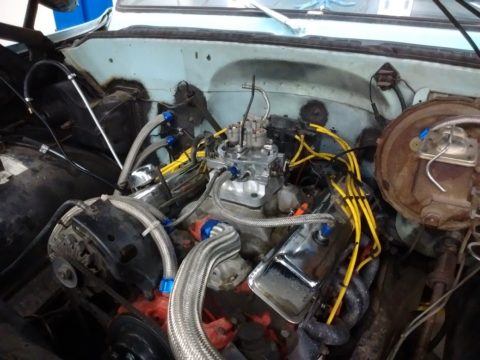
I got the TBI unit mounted with no drama. I had forgotten to tap the back for the brake booster, but that didn't take long to do.
I cut up a (presumably) TBI throttle bracket to fit the TBI where I had it, and still run the TH350. This was actually delightful, because this was the first time I used my sandblasting cabinet in the 13 years I've owned it.
